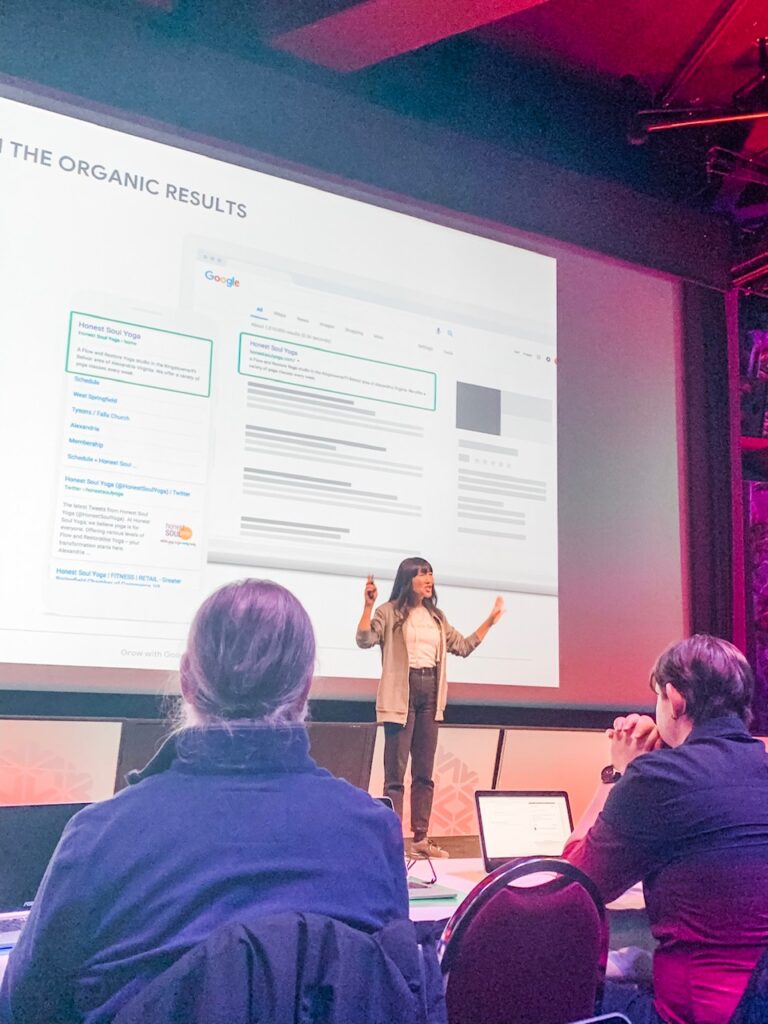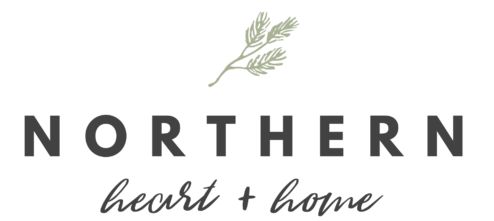In part two of our series we show you how you can reach customers online with Google. Did you miss Google's visit to the North?! If you’re looking to grow or start your business, expand your digital skill-set and deepen your online understanding to expand your audience, this article series is for you.
Part Two: Reaching Customers Online
In the first part of this series, we talked about getting your business online, using a business profile with Google My Business. In this second part of our three-part ‘Our Google Experience’ series, we will review and provide you with tools for reaching your customers online, with the help of Google.
This article explores three main concepts:
- How Google helps businesses reach customers;
- How you can reach your customers with a business profile on Google; and
- What you can do to improve your business’s online presence through search.

If you recall from the first part of this series, we discussed how important it is to BE THERE for your customers throughout the entire customer journey (not just when they are ready to buy something). And in today’s digital world, this means being ONLINE to help guide your customers along their journey.
So I think we can all agree that being online is important, but that’s just the tip of the iceberg. While having a presence can be great, it’s almost useless if it’s not reaching the people who need it. Simply put, an online presence that can’t be found in a simple search may as well not be there.
According to research, 4 out of 5 consumers use search engines to find info like store address, hours and directions*. So when your potential customer is using a search engine to get information and they can’t find it, what do you think they will do? In most cases, they will move on to the competition. It’s probably something you can attest to having done yourself. So how does search work and how can you make it work for you?
How Search Works (a simple explanation)
Think of search like a bunch of tiny spiders – they crawl around the ‘web’ (get it?!) and collect copies web pages that are publicly available (billions of them). Those pages then get organized or ‘indexed’, which is essentially like a massive virtual library of information that is stored in a meaningful way so it can be ready when people need information. In ‘Google-speak’ their spider crawlers are called Googlebot.
When someone (like your potential customer) types something into search, Google goes to their index (library) and pulls the most relevant and useful results based on over 200 factors/signals (all within a few milliseconds). According to Google, they perform 40,000 searches every second!

When a Search is Made
Once a person enters a search query and that whole search process happens, the results are listed in a specific way. On Google, a search engine results page (SERP) includes:
1. A listing with what Google thinks will answer your query, which includes:
- Page titles
- URLs
- Page descriptions
The information provided in these results are all controlled by us and/or the website managers for our sites. To improve how Google displays these results, we can use keywords and keyword phrases in our websites (more on this in a minute).
2. Business Profiles
Where applicable, Google will show full business profiles prominently, to help answer queries. This is why you should have one! See pt. 1 of this series to setup your business profile in three easy steps.
3. Ads
Search results may also include shopping ads with imagery and/or text ads. Google has been paid to show these as part of the search results.
4. Related Searches
At the bottom of the page, Google will show search results that are related or common to the query made.
That last section about what appears when people search may have been slightly redundant as you have likely made at least one Google search before and have seen first-hand what the SERP looks like. But it’s important to understand the foundations of how search works, so you can improve your presence to be better-suited to show up in more queries.

Do Your Own Site Search
If you’re following along and nodding your head and thinking, ‘well I’ve already done everything to improve my online presence, now what?’, well stick with me. You can actually perform a site search to see what Google has indexed from your website/online presence and find out how much is in that online library for Google to pull from when your customers are searching.
How to Perform a Site Search
- Go to Google
- Type in your domain name (website URL address) using the following formula:
site:yourwebsite.com
(make sure there aren’t any spaces and you don’t need the ‘www’) - Hit enter/return
The results will show exactly what Googlebot has indexed (any parts of your site – the more that has been indexed, the better).
Hopefully, in performing a site search you see that most of your site has been indexed. If your results are less than stellar, don’t freak out. This just means you have some work to do. Even if your site is well-indexed now, you should still work to keep it that way. Here’s how you can ‘up’ your chances of appearing in organic (unpaid) search results.

Tips for Appearing in Organic Results
- Keep your content relevant and original to your site. Make it fresh and make a point to add new information regularly. This is good for search, but it also makes your customer want to return to your site to see what’s new. Some people choose to add a blog to their site to add new content on a regular basis. Do what makes sense for your business.
- Look at the map of your site (architecture). Does it make sense? Ensure that the information is logically organized. A good way to test this is to ask a friend/family member to visit your site and find something that isn’t on the home/landing page. If it takes them longer than 15 seconds to find it, you may want to revisit the mapping of your site.
- When creating your website you have the opportunity to include page titles and descriptions. Use these to your advantage and follow the first tip of keeping content relevant to the site, to the page within the site, and to the topic at hand. This is where you can include your key words and phrases.
- Use optimized images. What does this mean? Well, if your images are uploaded straight from your photographer or even your mobile device, the quality (resolution) will be quite high. This is great if you want to get them printed, but in the digital world this is a definite no-no because large image sizes = long load times. The longer it takes the images to load, the slower your site gets. This causes most people (millenials and Gen-Zers especially) to get frustrated and move on. We want our info now and we don’t have time to wait for pages to load! So compress those images before putting them online (note: social media platforms automatically compress images when they are uploaded, but most websites do not).
- Mobile optimization. A large majority of people are performing searches using mobile devices. If your customer finds you via search and clicks through to your site only to find miniscule text because they are looking at the desktop version of your site, it’ll be much more difficult for them to navigate. If your website is not yet responsive (resizes to fit different screen sizes from desktop to mobile) than you are going to want to revisit your site altogether. It may be a bit of an investment, but well-worth the time and expense to ensure that you’re connecting with your customers in a way that works for whatever device they’re using. The mobile experience must be quick and easy for users. A site that is optimized for mobile devices will have a high contrast between text and backgrounds, appropriately-sized fonts for reading on small screens and menu bars that drop down for ease of use.

Google Tools to Monitor and Maintain a Strong Online Presence
While they may be the #1 search engine in the world, Google wants users to have the best experience possible – and that’s for both businesses and end users. Here are three FREE tools that Google has developed to help you monitor and maintain a strong online presence:
- Test My Site: Visit g.co/testmysite to check your site speed (along with testing the loading time of your site, Google will send a free report that you can share with details on improving your site’s speed).
- Trends: Visit g.co/trends to find popular search terms that are currently trending with Google. Use these in your relevant content and insert as key words and descriptions (when they make sense for your business.
- Search Console: Visit g.co/searchconsole to measure site performance. Search console includes tools and reports that can help you measure your site’s search traffic and performance; fix issues, and make your site “shine” in search results.

Well, there you have it. Part 2 is now under your belt and you are well on your way to becoming an online master to improve your business and its presence. This post tackled how Google helps businesses reach customers; how you can reach your customers with a business profile on Google; and what you can do to improve your business’s online presence through search.
Next week we will go over how you can reach your customers using online advertising (yes, spending a few bucks but to get great results) and how you can use data to drive business growth. Be sure to subscribe below so you don’t miss it!
Have you created your online Business Profile yet? Are you optimizing your site for search? Let us know what you’re doing to grow your business online! Drop us a note – we’d love to hear from you.




